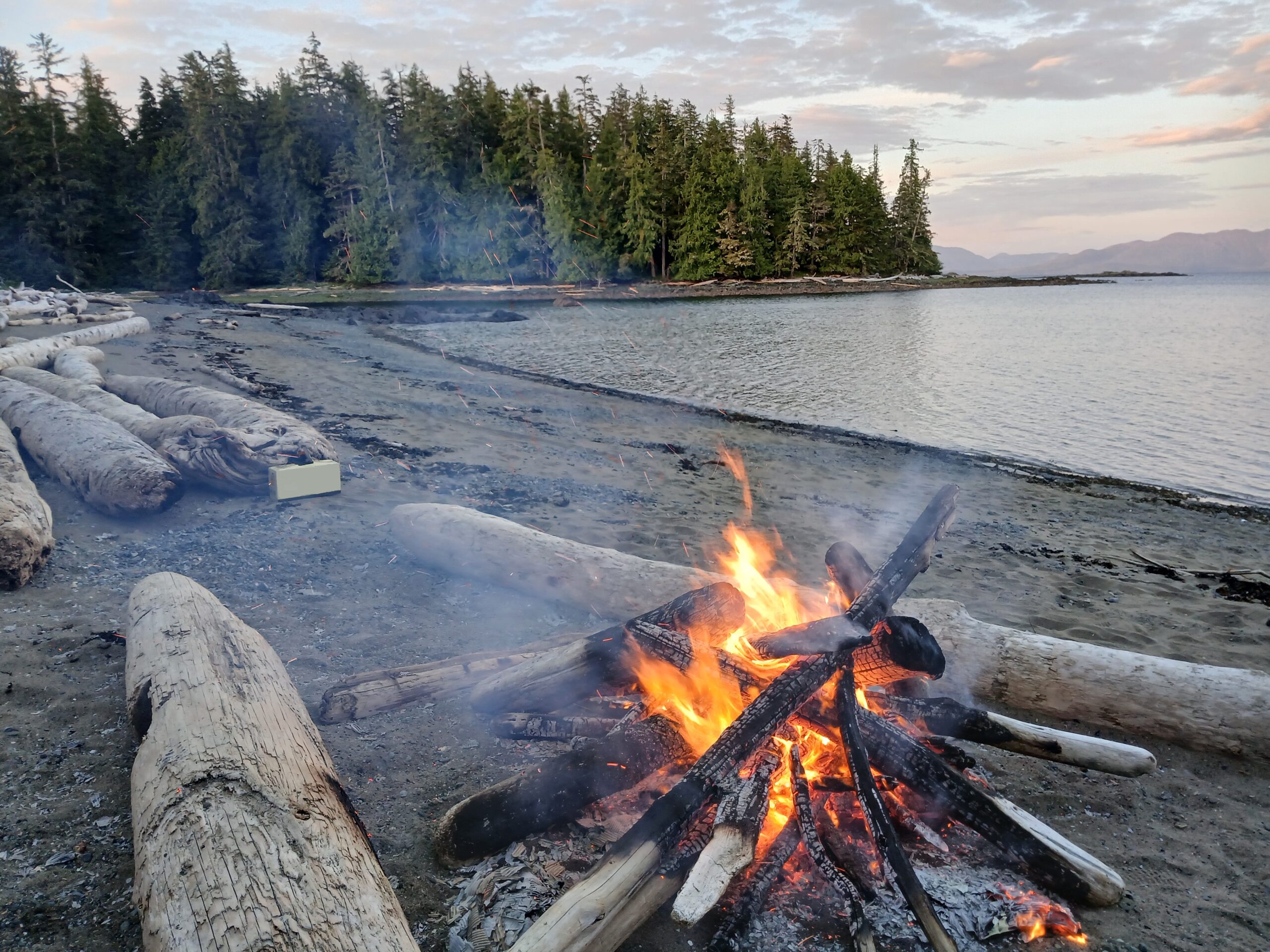Everyone knows what water is: H2O, two parts hydrogen and one part oxygen. Air, likewise; a swirling solution of gases – chiefly nitrogen, but also oxygen and carbon dioxide, and a whole smattering of other trace elements. Earth, now that one is a little more complicated.
What we call soil is the fragmented crystals of silicate rocks and metal ions, with a sprinkling of carbon and the other N-P-K minerals that are essential for plant life. In other words, ground-up rocks and leaves. It took me an upper-level forest fire science class in college to understand what fire, physically, is. As flammable substances undergo combustion reactions, they emit light and heat as energy escapes, packaged into photons in the infrared-to-yellow range. Fire is the visible, volatile cloud of gases where this reaction is taking place at that instant. In the heart of a flame where the hottest molecules are ionizing, this means fire approaches the hidden fourth state of matter: plasma.
Rarely do we encounter such things in the outdoors; these forces of nature are usually the domain of the physicist. Blanketed in rainforest as it is, southeast Alaska rarely experiences wildfires. Our firemen are usually on assignments in the more combustible landscapes of the lower 48. But fire in Alaska still has quite a story to tell. The southern coast of the state is situated along the Pacific Ring of Fire, where volcanoes like organ pipes belch out smoke signals along the Aleutians and Katmai’s Valley of Ten Thousand Smokes. (What are they signaling? To quote Coleridge’s Kubla Khan, “And all who see him cry: Beware! Beware!”) Several miniature volcanoes dot the coast of Prince of Wales Island, and the fingers of magma chambers tickle the surface under a smattering of bubbling springs in igneous rock. We took a backpacking trip to explore one such spring, before ultimately being turned around by a bear trail blocking our path. Not to be outdone, however, we climbed to the top of a mountain for one of the most incredible sunsets I had ever seen. The fire in the sky met the fire we built in our little Swiss chalet for a cozy evening above the tree line, where the three walls of our hut sheltered us from the howling alpine wind.

As fire is the emission of energy and light from a combustion reaction, it differs in an important way from the Greeks’ other three classical elements: temporality. You can hold a bottle of water, a bucket of earth, a flask of air; fire is a product, an effect that exists only as long as the reaction continues. This reaction is described by the “fire triangle”, a model that describes heat, fuel, and oxygen as the necessary ingredients for a fire to ignite. Remove any one of them, and the other two collapse – the fire gasps into a smoldering ash heap as the reaction stops. Heat is generally the limiting factor for fires on the Tongass, as too much energy is needed to warm the abundantly wet wood. We learned this firsthand as we tried to build our fire in that mountain hut. But in those rare instances where a fire does take hold, it rejuvenates the forest and turns the clock back to an earlier stage of succession, creating the conditions where our target plants are found – and where they will be planted to foster its recovery.

Finally, fire has an intensely human dimension. We are the only species to have mastered its making. Anthropologists believe that the advent of cooking allowed our ancestors’ skulls to devote less space to our jaws and more to our brains. What is more, the temporality of fire gave them time to sit around and tell stories while they were together, weaving the first nebulous friendships that would blossom into civilizations. We worked with our archaeology crew to survey streambeds for ancient charcoal deposits – places where the Tlingit Indians sat together and told these stories long ago – and help conserve this heritage during current timber harvests for the tribe’s totem poles. I have also spent many an evening reading the Alaska Native legends from the Thorne Bay Library – tales passed down through many generations of campfires, tales of brave adventurers and daring escapes from cruel twists of fate in the wild north country. There is a special charm even today to sharing stories around a campfire, as I have had the chance to do many times this summer.
My time in Alaska will be ending shortly, and it has truly been an unforgettable experience. I dreamt of working in the Last Frontier for years, and I have learned more here than I could have ever hoped for. When my Xtratuf rain boots have been resigned to barnyard duty, when the salmon dwindle back to trout and the wind through Pennsylvania’s caves does not play the same melodies, I will still have many stories of the incredible crews I had the chance to work with and the once-in-a-lifetime sights I saw in Thorne Bay. These campfire tales of bears and salmon, caves and mountains, cumulus clouds and constellations will always bring back exceptional memories of the summer I spent in Alaska – and I’ll tell those stories with a fire in my eyes.

